The 18 photos that encapsulate Trump’s first year as president
As the first year of Donald Trump’s unorthodox, tumultuous presidency draws to a close, there are some moments that will be etched into our memories for years to come.
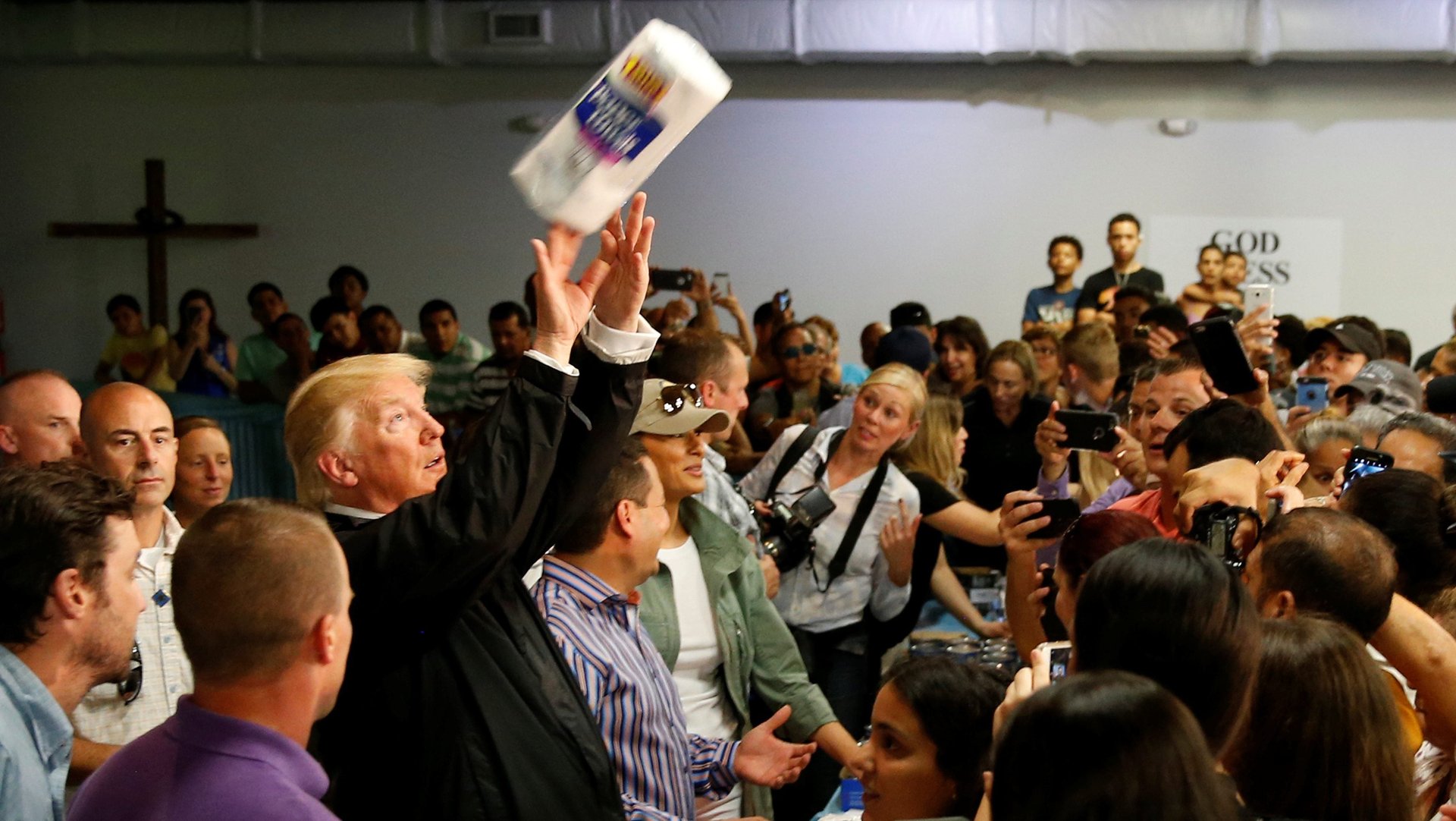

As the first year of Donald Trump’s unorthodox, tumultuous presidency draws to a close, there are some moments that will be etched into our memories for years to come.
Vaulting a television personality who had never been a politician before into the most powerful office in the US resulted, perhaps inevitably, in something of a reality show. Trump swept in with a rotating cast of larger-than-life White House characters and a fact-free publicity blitz led by his very own Twitter account—all amplified by a major network that seems increasingly willing to parrot his talking points.
Reality show vibe or not, the Trump presidency’s impacts have been real: from a rollback of regulations protecting consumers and the environment, to a US pullback from global agreements, and the mainstreaming of nationalist, often hateful, ideologies that once lurked on American society’s fringes. It’s taken almost a year to pass a major piece of legislation—the tax bill, signed on Dec. 22—but that is expected to have a vast impact on American lives and the flows of global capital.
Here are 18 moments that encapsulate the main narratives of Trump presidency so far.
A new White House
The contrast between the outgoing first couple and the incoming one was captured on the day of Trump’s inauguration, as both the Trumps and Obamas stood on the steps of the US Capitol.
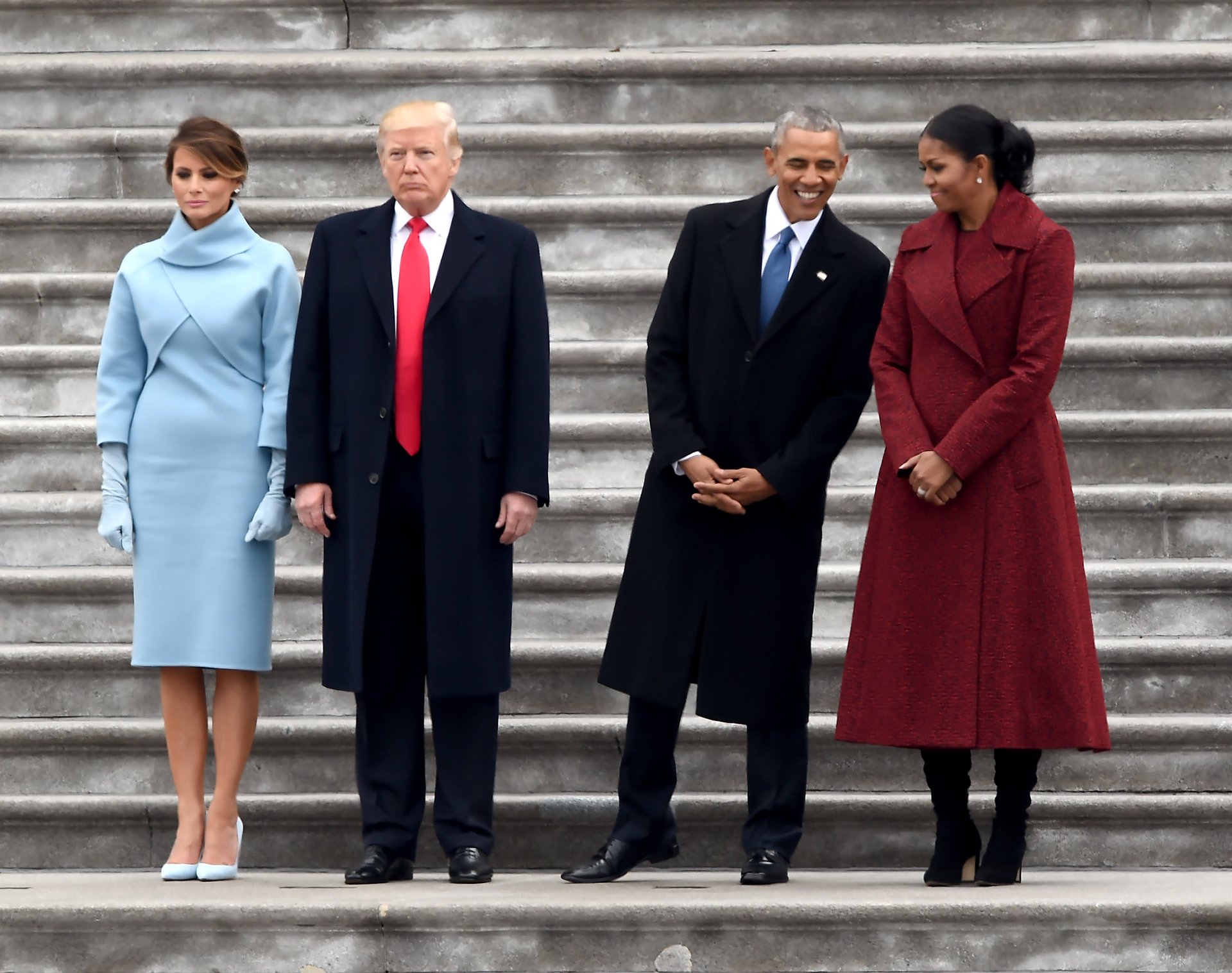
That day, Trump delivered a dark and foreboding inaugural speech that promised a radical departure from past US policy and made “America First,” an anti-Semitic phrase from the WWII era, official US foreign policy. A smaller-than-expected crowd turned up to hear him speak, but his press secretary insisted it was the largest ever, setting the stage for the administration’s acrimonious relationship with the press.
Since then, the administration has stopped sharing visitor logs, shut down the petition section of the whitehouse.gov website (they have promised to resurrect that) and backed out of transparency and good governance initiatives.
An American uprising
The day after Trump’s inauguration, American women (and women around the world) came out in record numbers for a “Women’s March” that seemed as much a repudiation of Trump as it was a celebration of female power.
It was a sign of things to come—since January, Americans on both the right and the left have become more politically active than they have in decades. Trump proposals from the “Muslim Ban” to the attempted repeal of Obamacare spurred mass protests across the country, inspired new entrants to join a burgeoning progressive movement, and created unlikely allies like the Jewish and Muslim fathers who met at a Chicago protest.
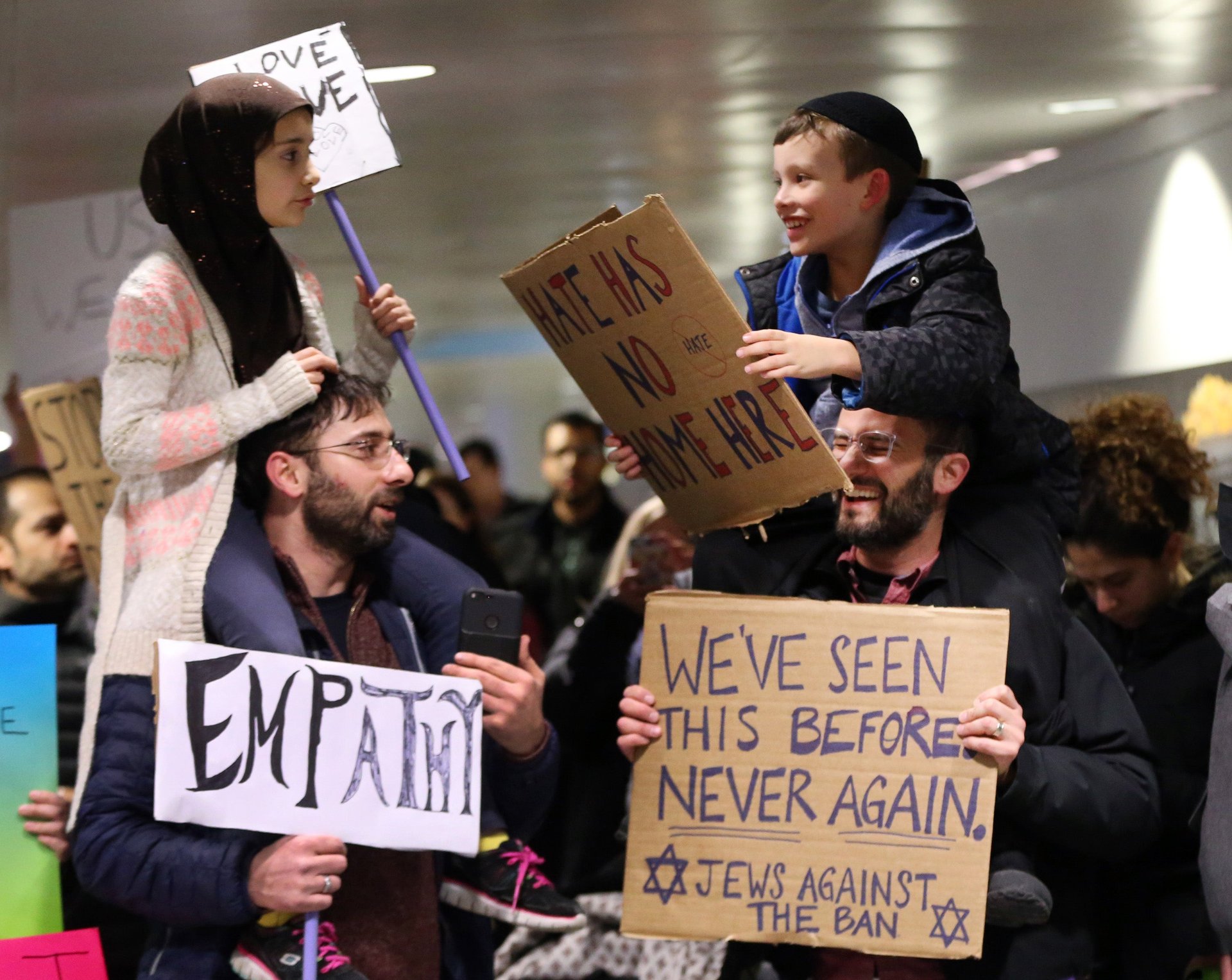
Racial strife rises
Trump’s presidency has also come with a rise in hate crimes against minorities, and visibility of far-right extremists. They’re pushing “it’s okay to be white” memes, bonding over their hatred for “mainstream media” they see as too anti-Trump, and holding white nationalist marches.
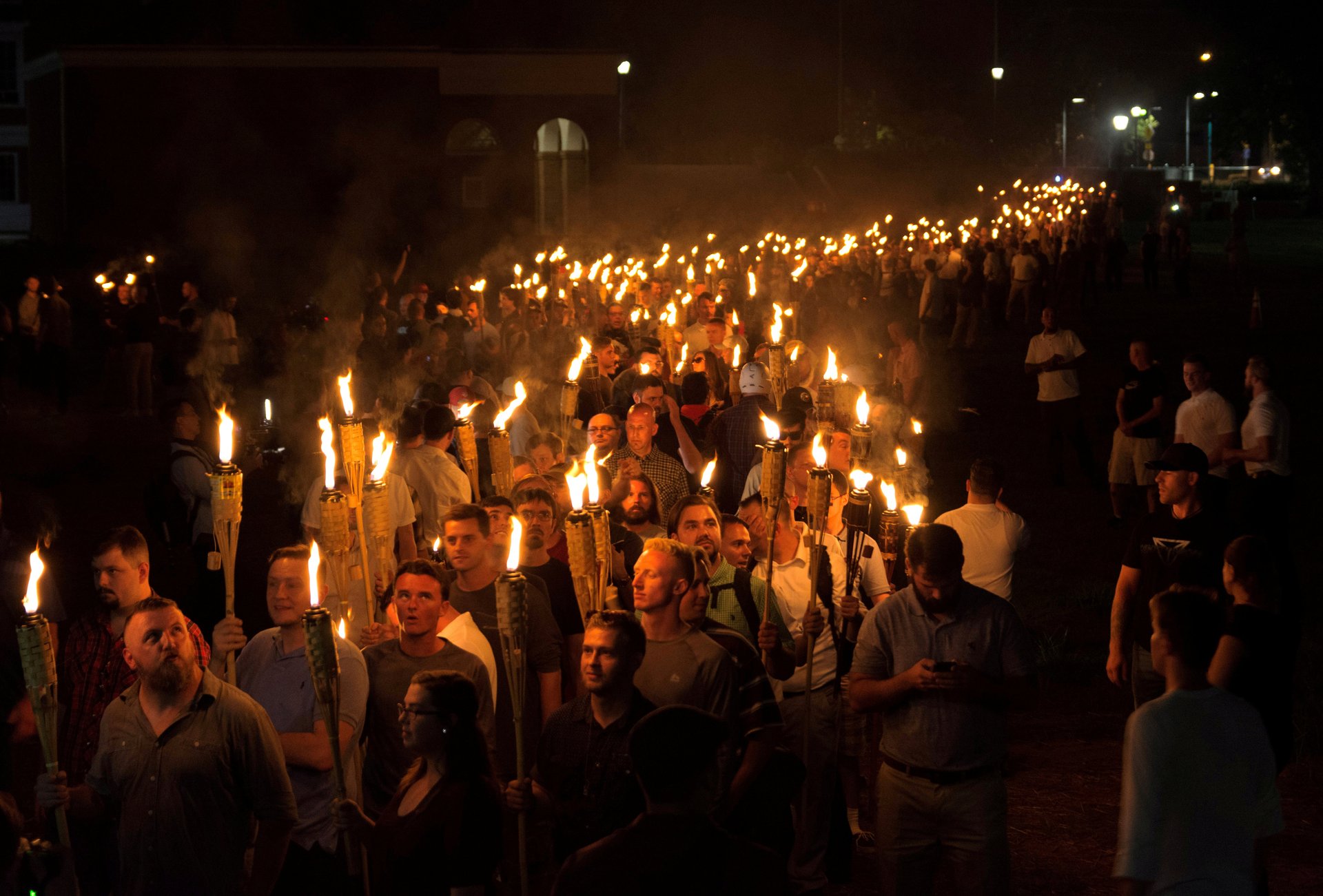
After a counter-protestor was killed at a “Unite the Right” rally, Trump dismissed the danger from the right, saying there were “good people” on both sides.
Trump’s Twitter account has insulted everyone from Republicans in Congress to his own FBI, but he has saved his harshest vitriol for men and women of color who disagree with him, including the National Football League players who are kneeling during the national anthem to protest police killings of unarmed men. In one instance, he bungled a phone call to a widow of a soldier killed in Niger, and then called the woman a liar on Twitter.
Turmoil in the West Wing
Trump’s attempt to fuse together wealthy political ingenues, Goldman Sachs bankers, foreign policy extremists, and white nationalist-leaning blowhards into one administration was never going to be easy. During much of his first year in office, the White House made headlines as much for its internal battles and high drama as for the policy it was setting.
Six months after it was taken, only one of the advisors in this Jan. 28 photo was still at the White House (vice president Mike Pence):
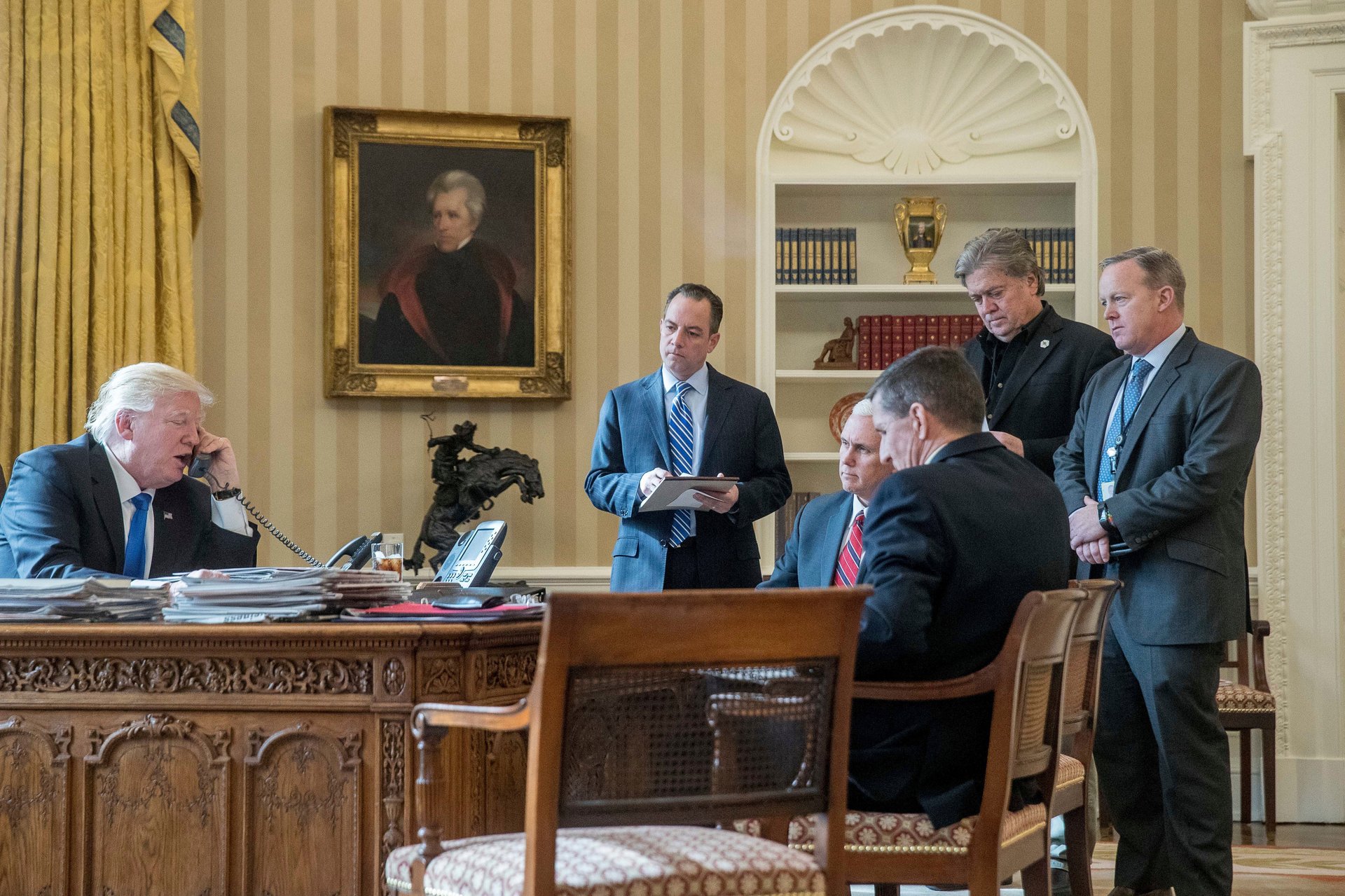
Turnover is normal in a president’s cabinet. What’s abnormal is for so much of it to happen so early in a presidency.
In addition to the now-departed men above (from left: chief of staff Reince Priebus, senior advisor Stephen Bannon, press secretary Sean Spicer, and national security advisor Mike Flynn), Trump has lost health secretary Tom Price, advisor Omarosa Manigault Newman, deputy chief of staff Rick Dearborn, and the most short-lived of all, Anthony Scaramucci, the press secretary who lasted less than two weeks.
That’s not counting the exodus from the executive branch agencies that Trump ultimately controls—hundreds of officials have left top government positions from the Environmental Protection Agency, the State Department, the Department of Homeland Security, and others.
A conservative Supreme Court judge
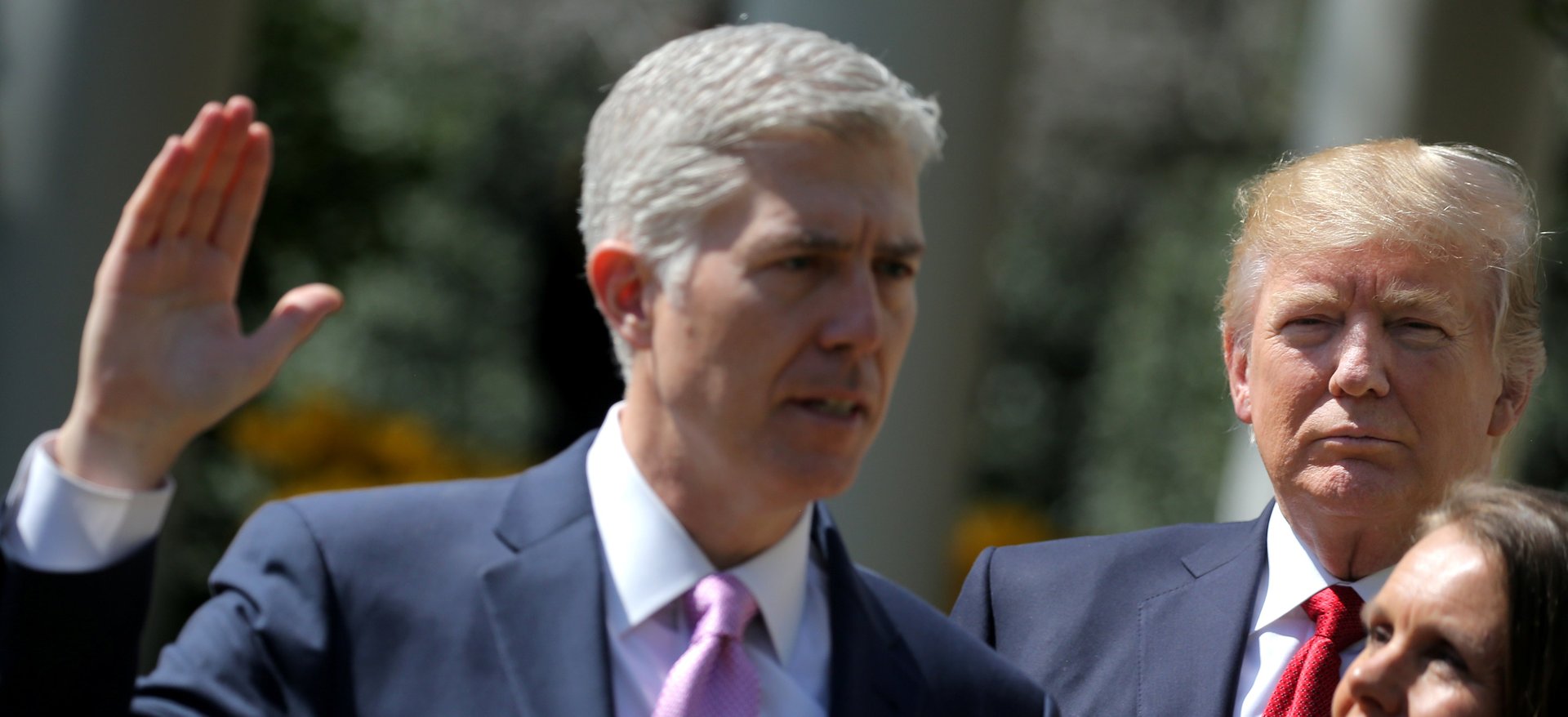
Trump’s first, and some Republicans say biggest, political win so far was the appointment of Neil Gorsuch to the Supreme Court in April, restoring the court’s 5-4 conservative majority.
Gorsuch filled a seat that was controversially held open for months after Republicans refused to give a hearing to any Obama nominee, an unprecedented move. Gorsuch’s early decisions showed a deeply conservative bent, and in 2018 he could cast the deciding vote on gerrymandering and gay rights cases that could impact election results and American lives for decades to come.
A new Middle East policy
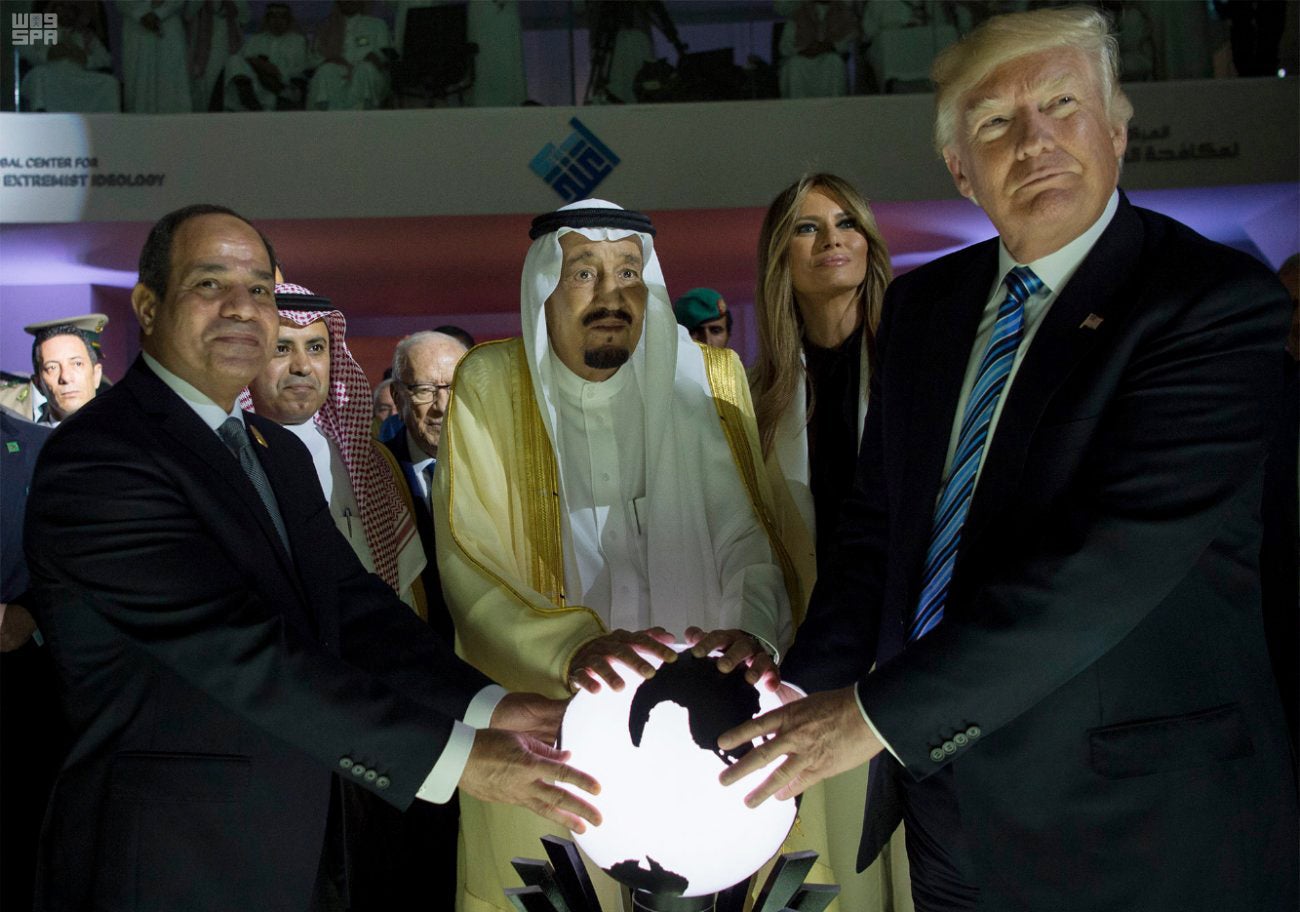
Trump’s first foreign trip was to Saudi Arabia in May—an unprecedented move for a US president. It produced this oddly menacing photo of Trump, Saudi king Salman bin Abdulaziz, and Egyptian president Abdel Fattah el-Sisi, gathered around an odd glowing orb. They were opening an anti-extremism center, but the strange photo inspired comparisons to everything from Lord of the Rings to a Megadeth album cover.
Trump’s support for the Saudis has since marked a significant shift in Middle East politics, with Trump backing their bloody war in Yemen, internal crackdowns, and their blockade on Qatar.
The Obama administration had a conflicted—and some say hypocritical—relationship with the repressive Sisi, refusing to invite him to the White House, but also declining to call his seizure of power a “coup.” Trump has opted for clarity, forming a close relationship with the authoritarian former general.
Fighting the intelligence community and James Comey
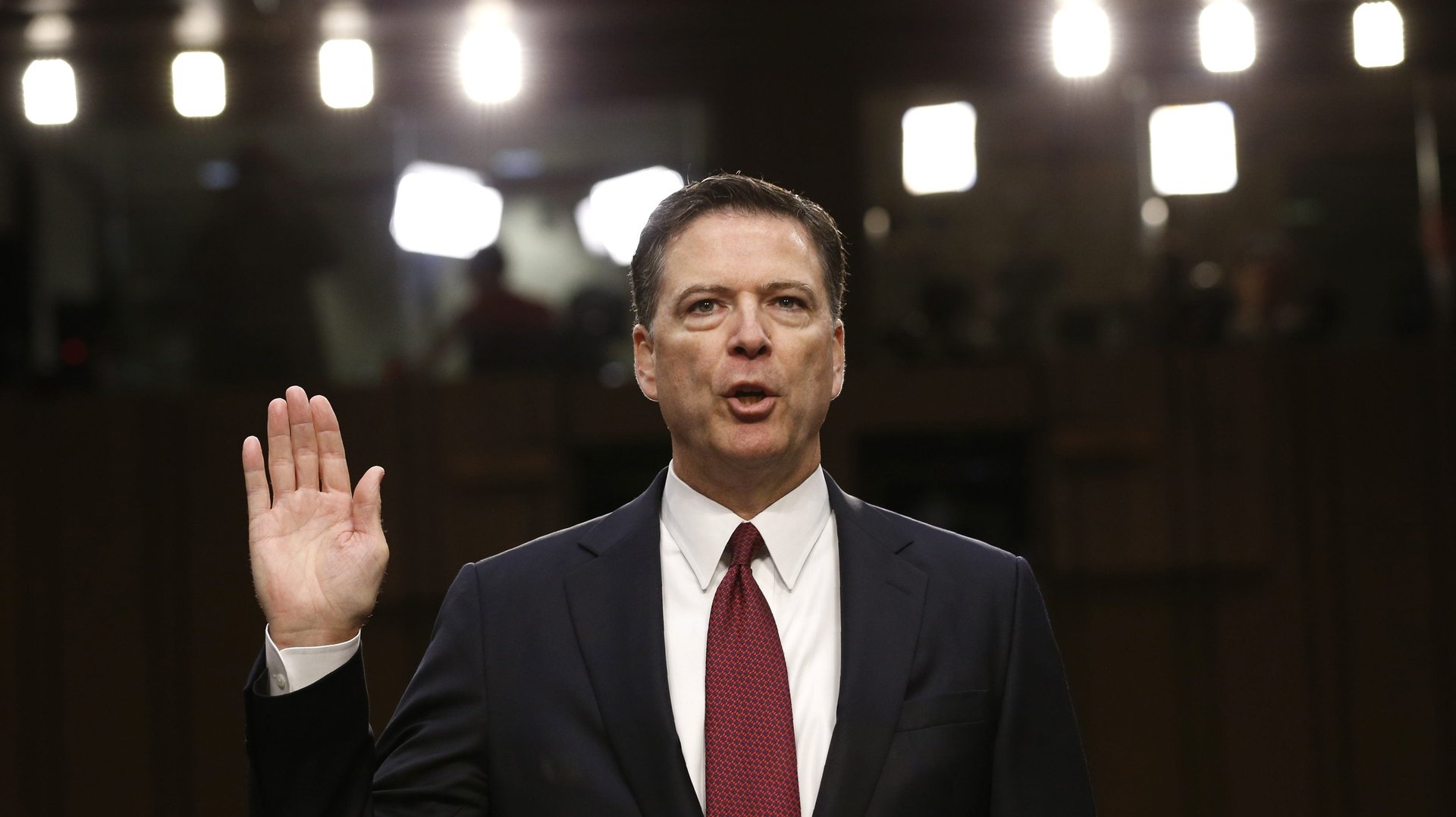
Investigations into Russia’s meddling in the US presidential election, and the Trump campaign’s possible ties to Moscow, have hung over the presidency from the very beginning. Days before his inauguration, the “Golden Showers” dossier surfaced, which alleged a multi-year Russian plan to cultivate Trump in order to split the “Western alliance.”
Trump has regularly derided the US intelligence community, although even his own advisors agree Russia meddled in the US election. His decision to fire his FBI director James Comey on May 9 moved the FBI to appoint special prosecutor Robert Mueller to oversee their investigation. Mueller is believed to be closing in on top White House officials, after securing the cooperation of other advisors.
Firing Comey was the biggest mistake “in modern political history,” Trump’s former top advisor Stephen Bannon later said.
All the Russia

For a man who’s built a career on PR, the optics were inconceivably bad for Trump.
The day after firing Comey and instigating mass speculation that the investigation into Trump’s campaign ties with Russia was the reason, the president was pictured laughing in the Oval Office with Russian foreign minister Sergei Lavrov and then-Russian ambassador Sergei Kislyak, who had compromised top Trump aides.
If that weren’t bad enough, check the photo credit. No US media were present to document this historic event, but Russian photographers were. Even worse, it soon emerged that Trump had told the two Russians classified intelligence given to the US by Israel. One moment captured three of Trump’s opponents biggest concerns about him: his relations with the Kremlin, his hostility toward the press, and his trustworthiness on sensitive security matters.
Frenemies in Congress
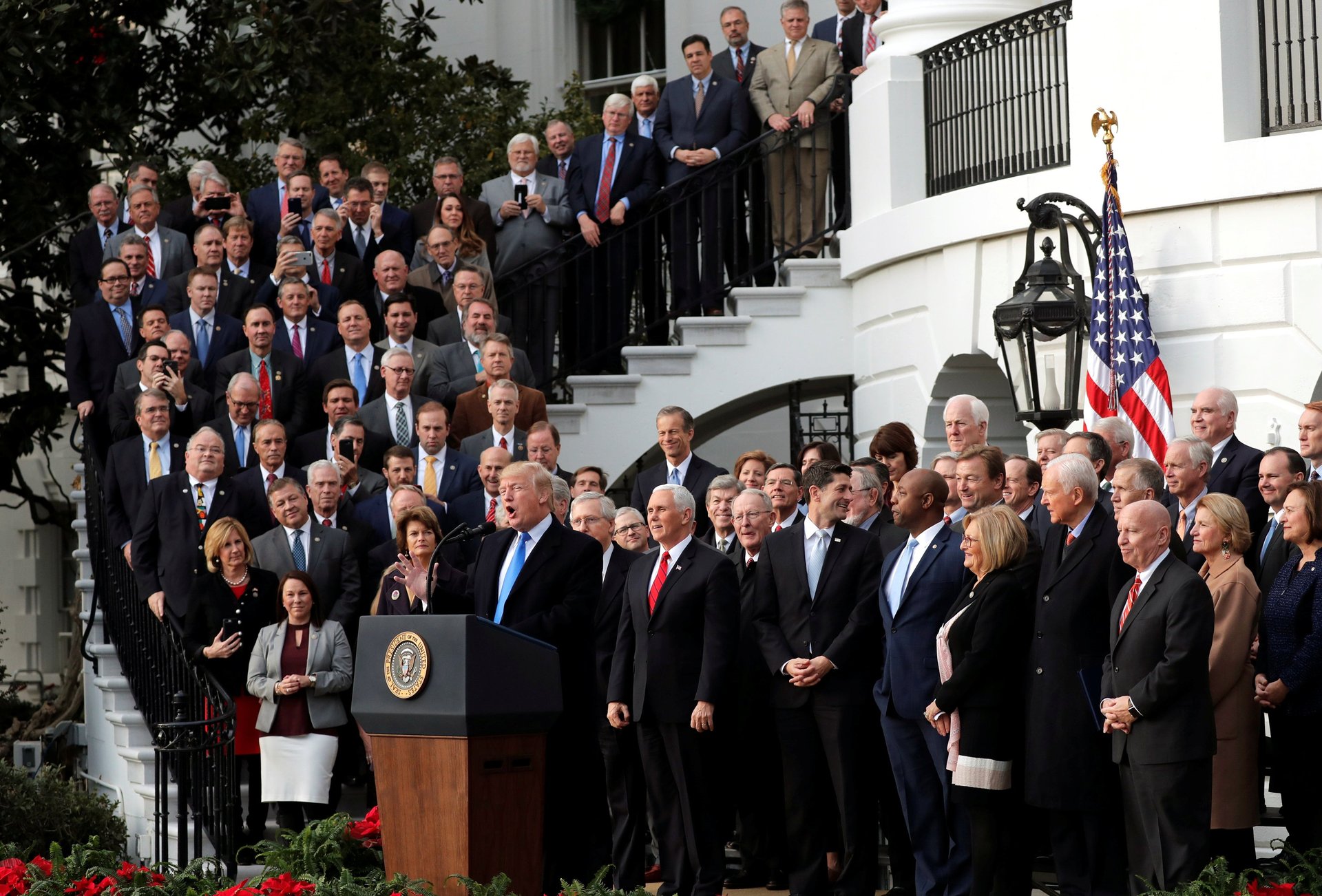
Trump’s relationship with the Republicans in Congress has been a roller-coaster of name-calling, frustration, and exultation for both sides, particularly during the failed attempt to repeal Obamacare. This week’s passage of a bill that will slash taxes for companies and the wealthy—but add $1.5 trillion to the national debt—marks the high point of that relationship so far.
Republicans who condemned Trump before the election rushed to back him as the bill was discussed, while Democrats were mostly left out of the negotiation process. Still, even his “friends” in Congress seem a little mystified by the president’s behavior. “He likes to talk,” Senate majority leader Mitch McConnell, a previous Trump Twitter target, said this week, after the tax bill was passed. “I’m talking to him all the time. You get phone calls at the oddest hours—it’s not just me, it’s a lot of people.”
Casting NATO aside
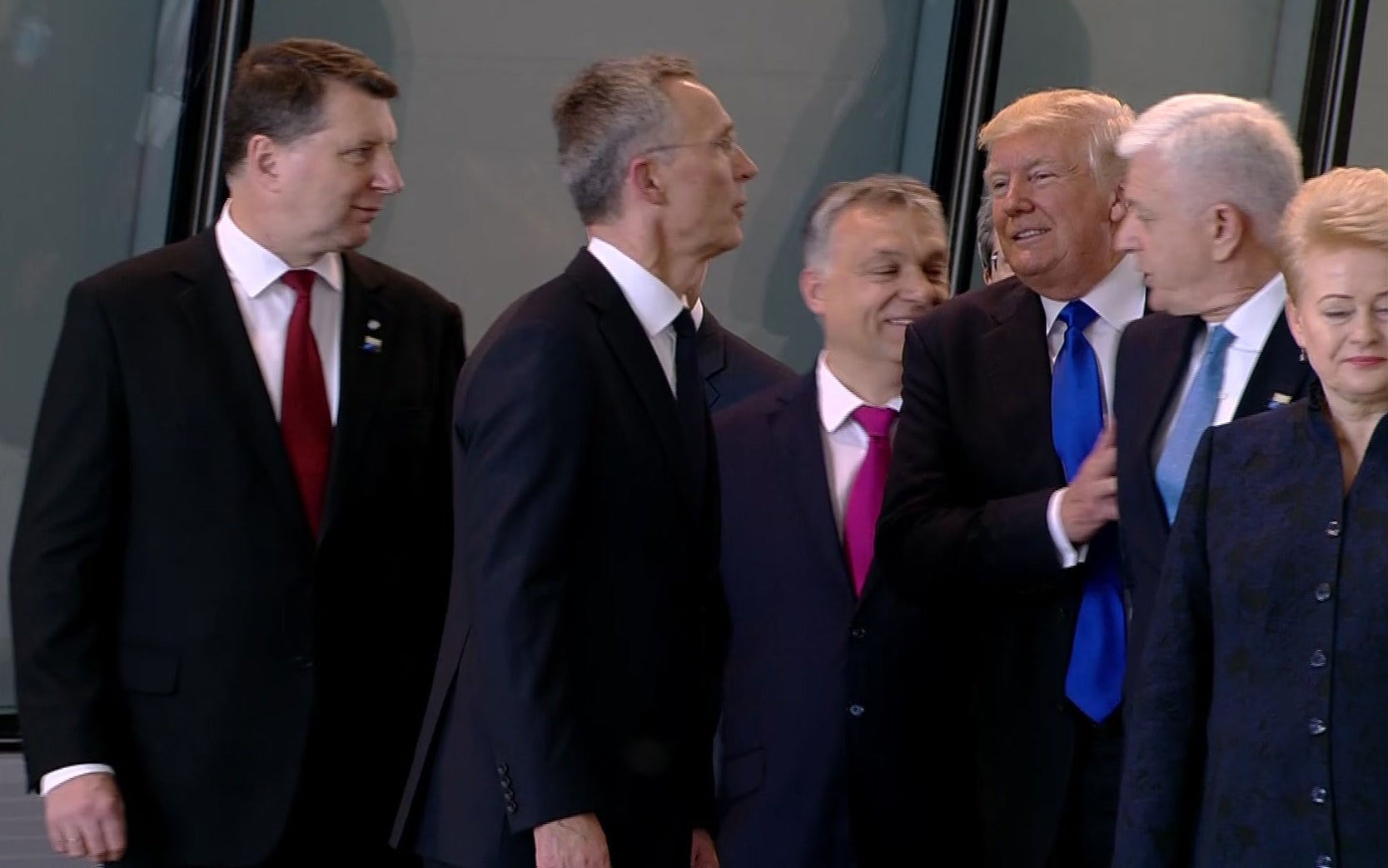
Trump looked far less happy surrounded by traditional US partners at NATO’s Brussels headquarters in May than reveling in a sword dance with the Saudis. Before railing at the alliance to boost its military spending, in perhaps the most GIF-able moment of his presidency, Trump shoved his way past Montenegrin prime minister Dusko Markovic to get to the front row of a photo.
Instead of welcoming NATO’s newest member, he had unthinkingly pushed him aside. Trump’s performance at the summit has spurred America’s European allies to start contemplating life without US support.
Handshake diplomacy
Trump’s famously aggressive handshakes, designed to throw off the person on the other end, have inspired a new calculus for world leaders—do they grip him fiercely in return or opt to unsteady him at the outset?
France’s Emmanuel Macron seemed to win his first round with Trump in May, putting on a steely face and even steelier grip.
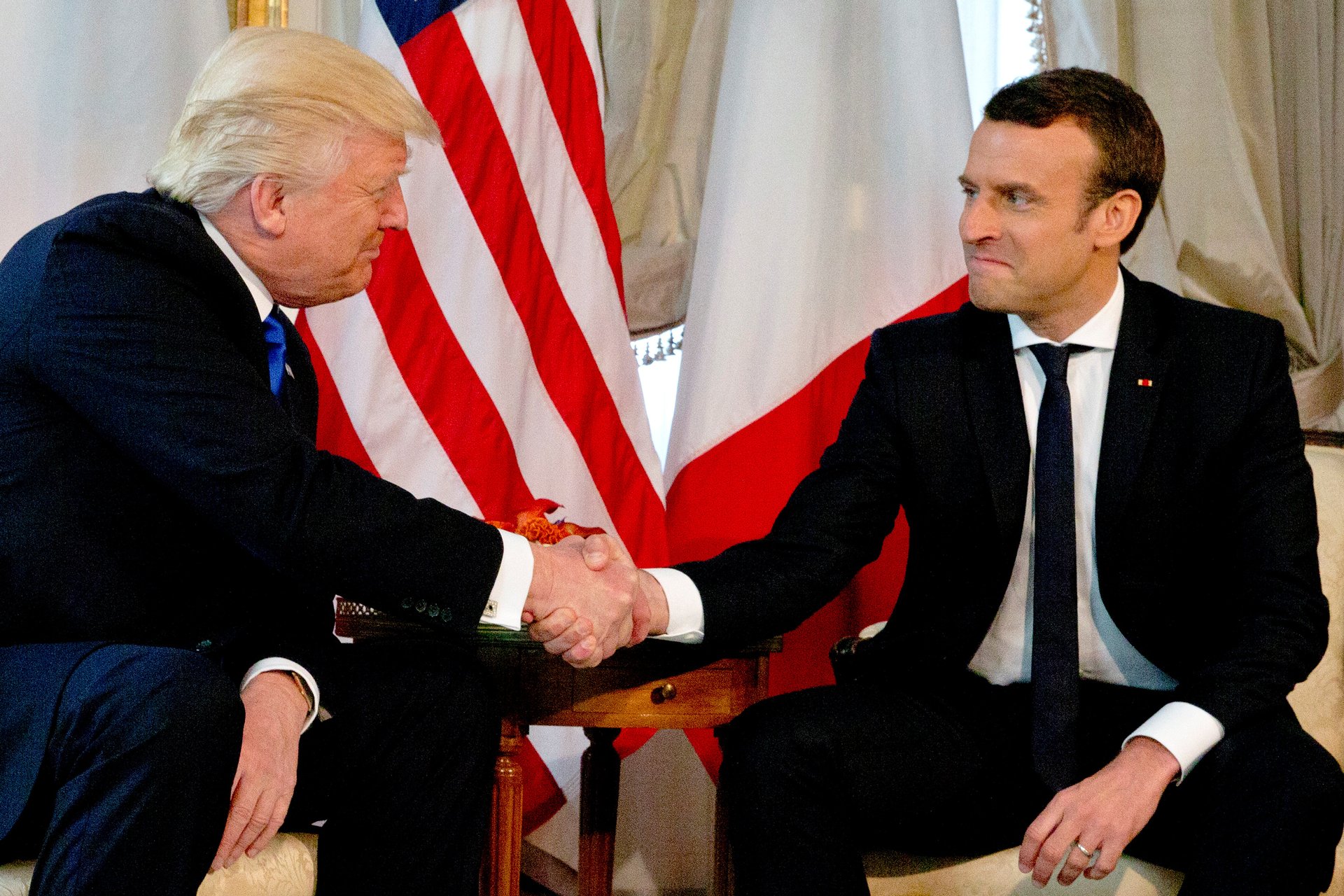
“My handshake with him wasn’t innocent,” said the newly-elected French president during the G7 Summit in Taormina, Italy. “It wasn’t the Alpha and the Omega of politics, but a moment of truth.”
An unlikely ally in China
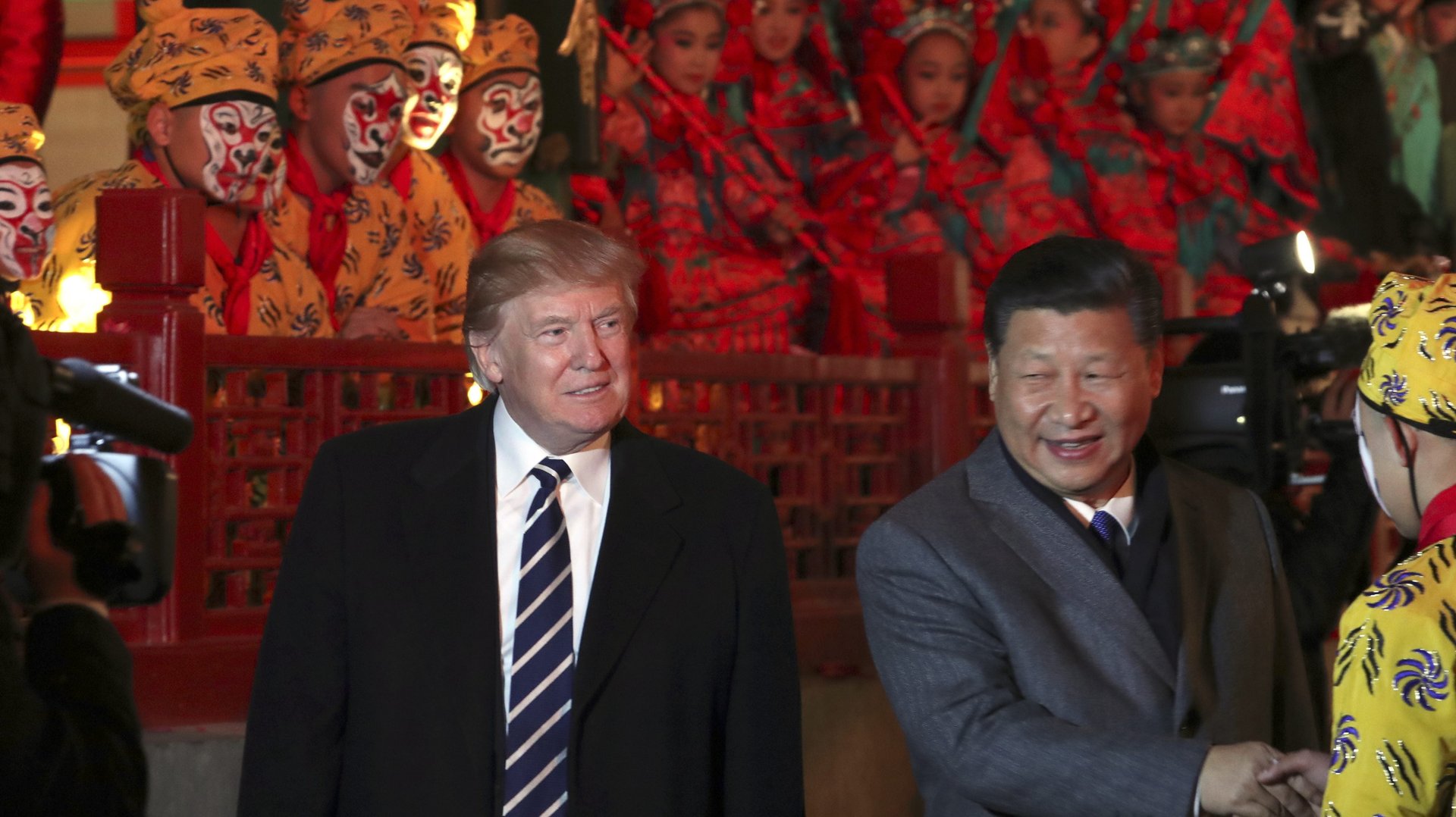
Trump’s foreign policy has been marked by a gulf between what he said on the campaign trail and his actions as president. His relationship with China epitomizes this “speak loudly and carry a tiny stick” attitude.
As a candidate, Trump accused China of “raping” American workers, and promised to designate it a “currency manipulator” on the first day of his presidency. But when Chinese president Xi Jinping visited the US in April, Trump was a respectful host (although he did bomb one of Xi’s allies during dinner). By the time of his visit to China in September, he had utterly capitulated.
Xi’s government literally rolled out the red carpet, flattering Trump with an unprecedented dinner in the Forbidden City and treating him to some traditional opera. Trump responded by calling Xi a “very special man.” The Chinese Communist Party had played him “like a fiddle,” Mexico’s former ambassador to China said later.
“Fire and fury”
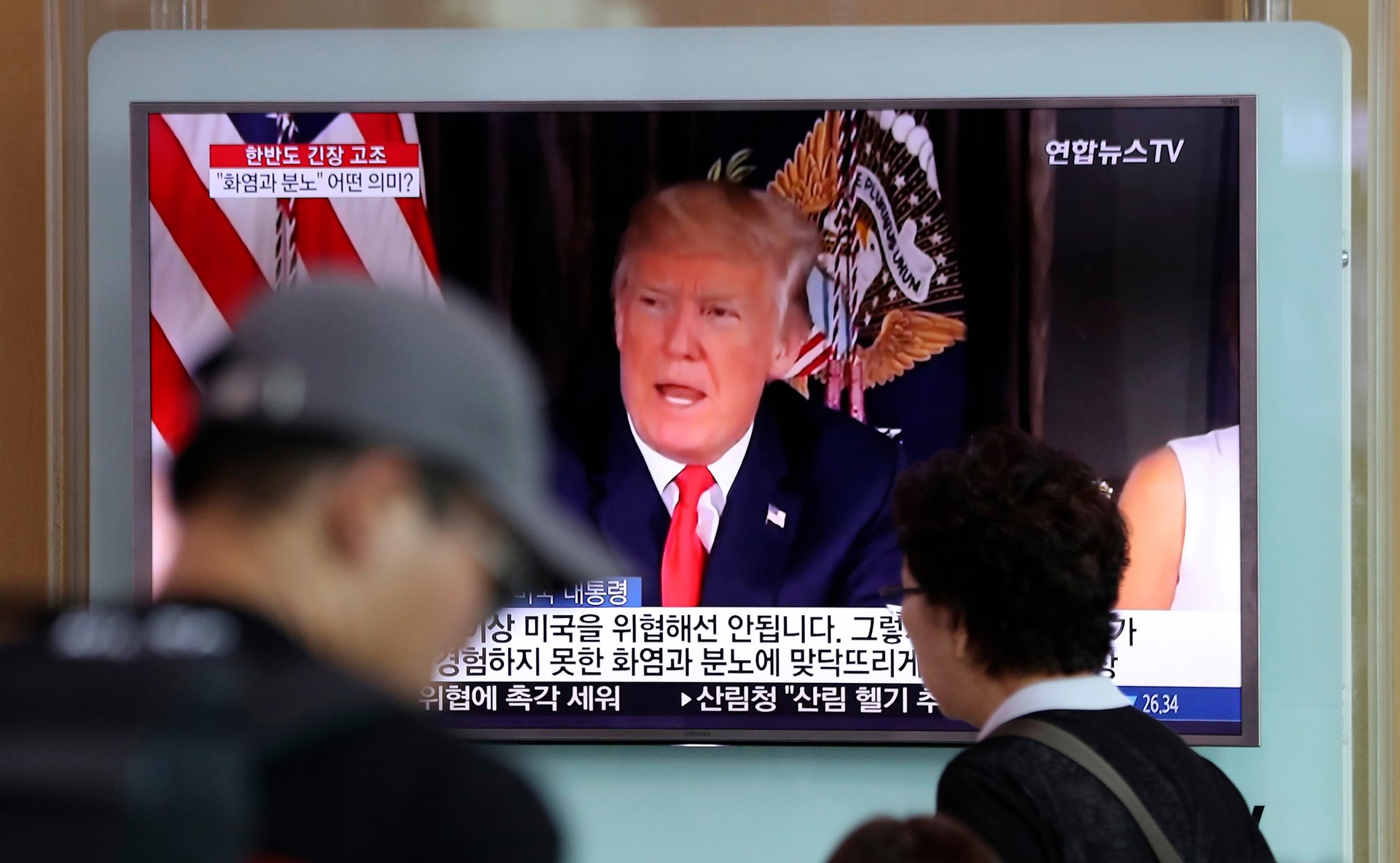
North Korea is the ticking time bomb of Trump’s presidency. While previous administrations have failed to deal with Kim Jong Un’s growing weapons capacity, Trump’s approach has been characteristically, and dangerously, combative. Sitting in his New Jersey golf club in August, he threatened to unleash “fire and fury” on Pyongyang—with the resulting images beamed across the world.
Since then, the two countries have only edged closer to all-out war, a situation that puts tens of millions of lives on the Korean peninsula in danger.
All change on climate change
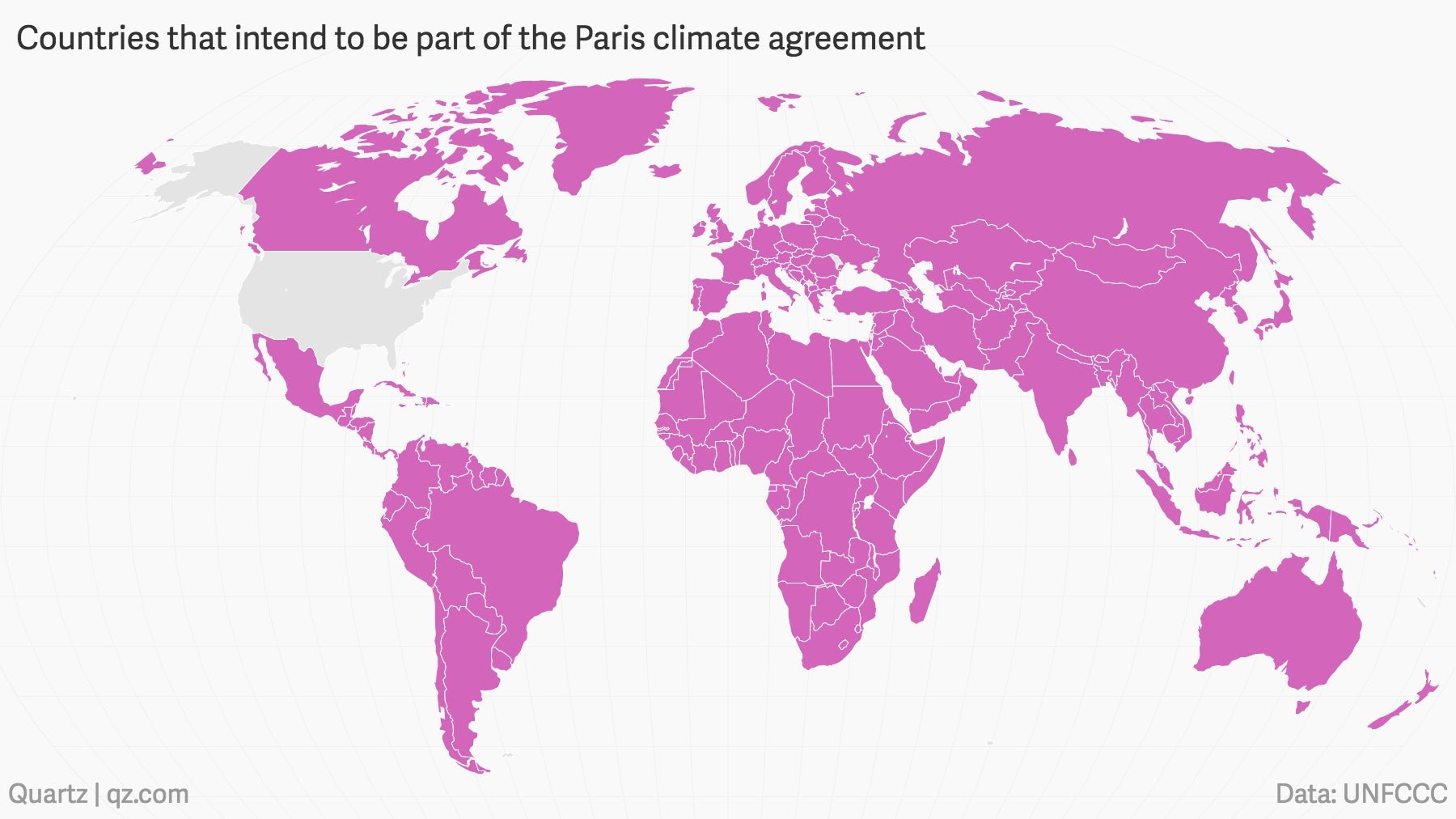
Ok, this isn’t a photograph—but it says a lot. The US is now the only country opposed to the Paris Climate Agreement, after Trump pulled out of the landmark coalition in a surreal announcement in the Rose Garden in June. Since then, the administration has removed climate change from the list of threats in its national security report, and sent coal industry boosters to a United Nations climate change summit.
National disasters

Trump’s first year in office was marked severe floods and massive fires that will continue to affect millions of American for months to come.
In a sign of his lack of political experience (or, some said, his unfamiliarity with charity or manual labor), Trump sometimes struggled to say and do the right things while comforting victims and visiting flood-ravaged zones. In one particularly egregious example, he tossed paper towels to flood victims in Puerto Rico like he was practicing his basketball free throws.
Backing Israel
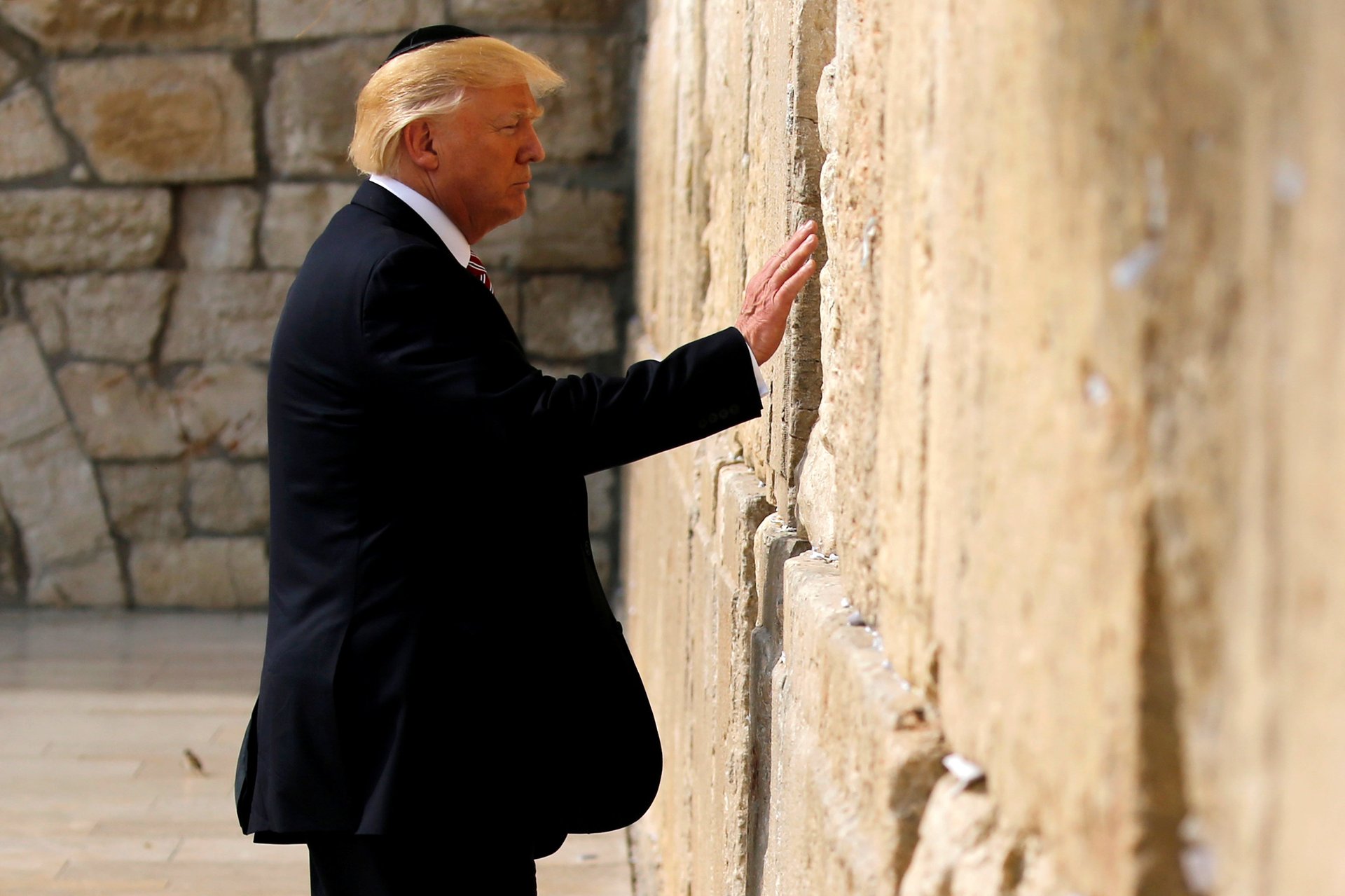
Trump’s reset in the Middle East has also included new support for Israel. He came to office promising to move the US embassy to Jerusalem and recognize it as Israel’s capital, and this month he refused to sign another waver deferring that move.
The decision has spurred waves of protests across the Middle East, and seems to have imperiled the Middle East peace process Trump put his 36-year-old son-in-law Jared Kushner in charge of. In another sign of America’s increasing isolation on the world stage, the UN roundly condemned the move in a General Assembly vote on Dec. 21, with 128 countries voting against the US. Only Israel and seven minnows backed Washington, despite Trump threatening to cut off aid from countries that opposed him.
Inspiring a #MeToo movement
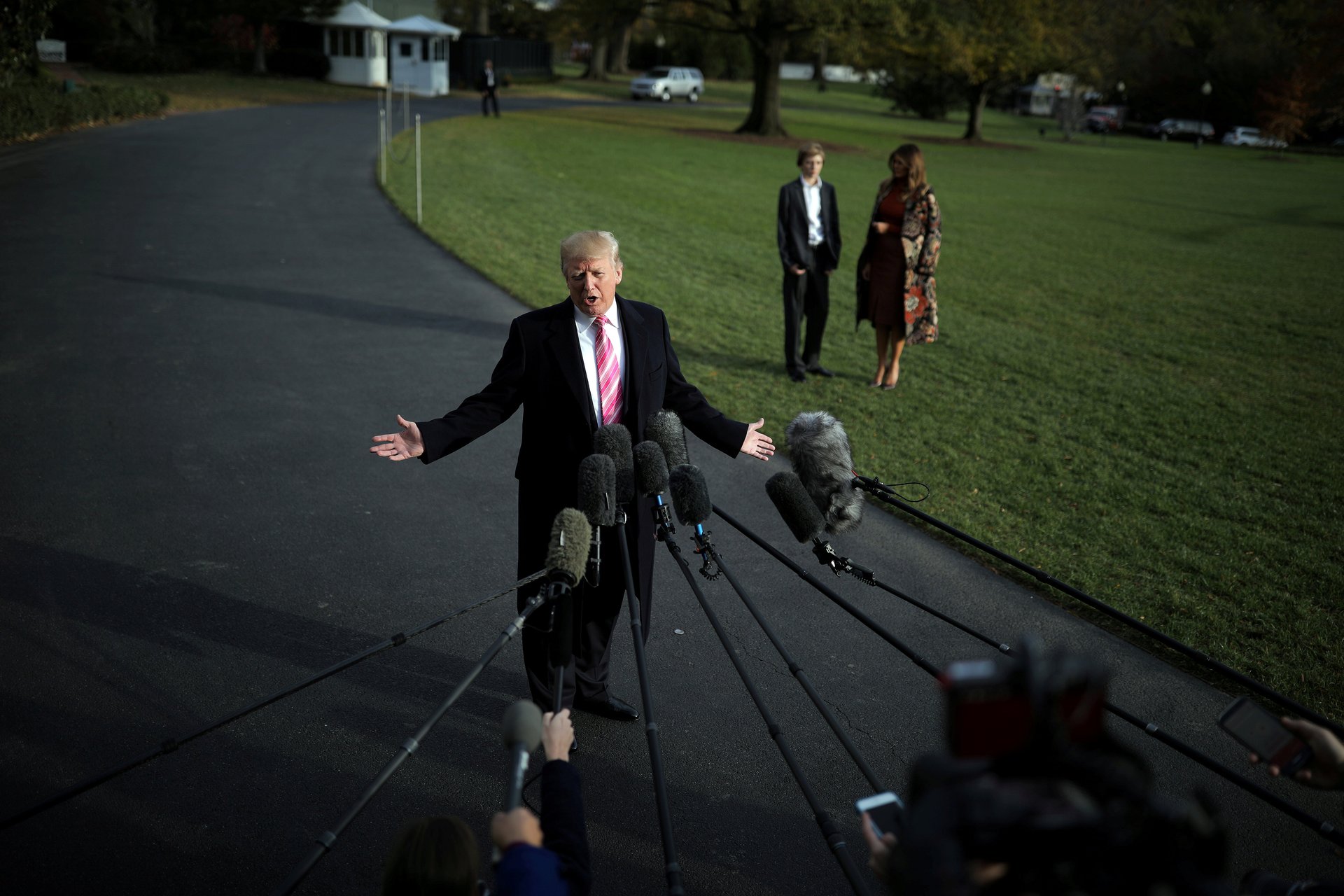
Since Trump was elected, a wave of sexual harassment investigations has swept the United States, exposing several high-profile, powerful men who regularly harassed women working for or around them.
Some 17 women have accused Trump of harassment or assault, and he himself bragged about assaulting women, but Trump’s White House has insisted that since he was elected, these women’s accusations don’t matter to the American people.
Trump seemed to double down on the issue in November, backing Alabama candidate for Senator Roy Moore, who has been accused by numerous women of assaulting them when he was in their thirties and they were in their teens. Heading from the White House for a Thanksgiving break, while his wife and young son waited behind him, Trump explained his position to the press. “Look,” he said, “he denies it.”
Golfing
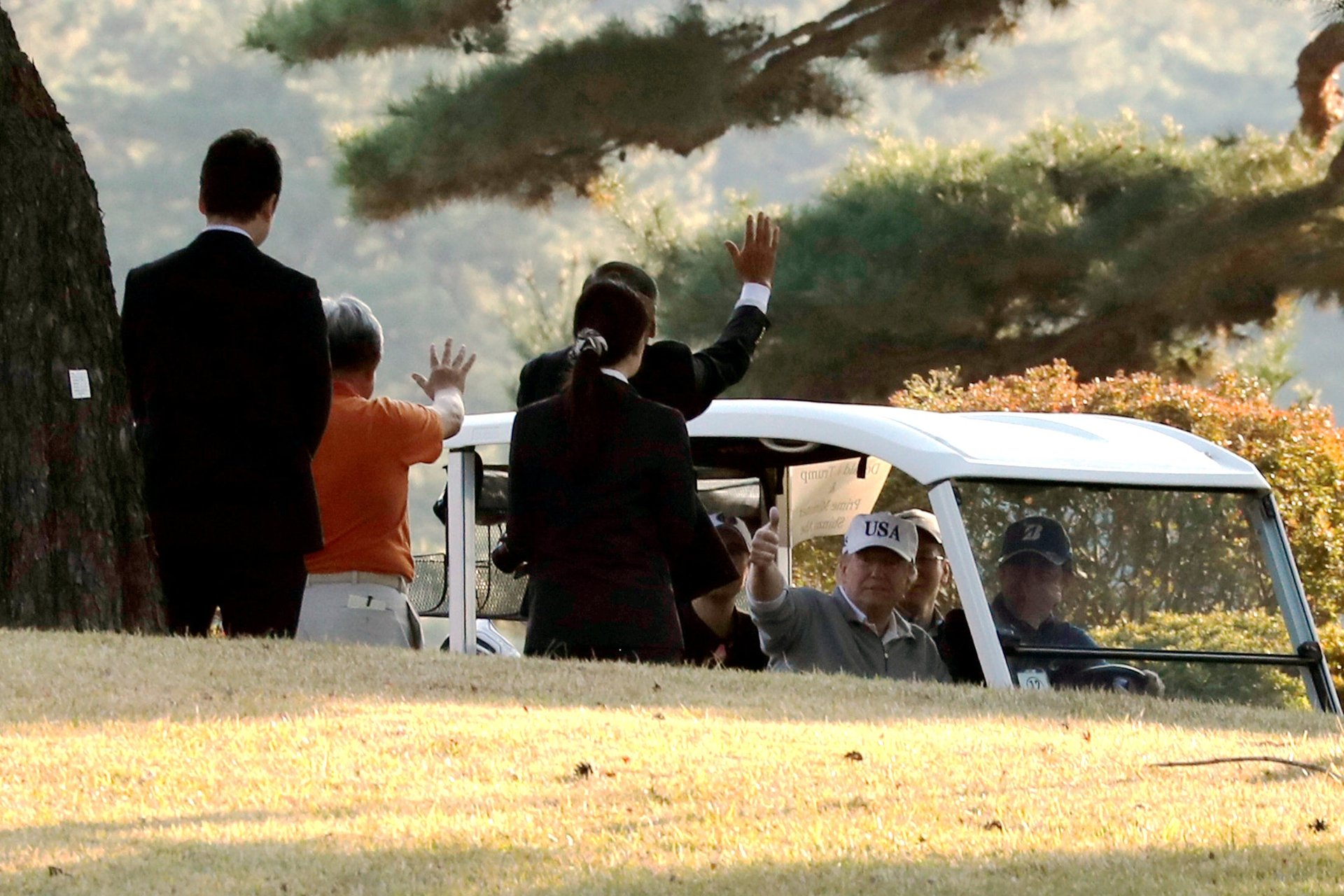
No review of Trump’s year would be complete without noting the unprecedented amount of time he’s spent golfing at his own clubs and hotels, which are frequently named in the press because of his visits.
President Trump has gone to his golf clubs nearly 80 times as of Dec. 22, and is believed to have played golf during most of those visits.